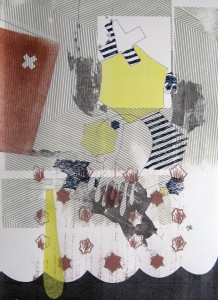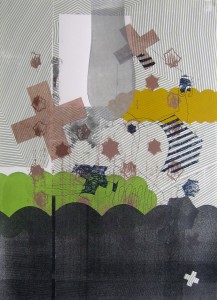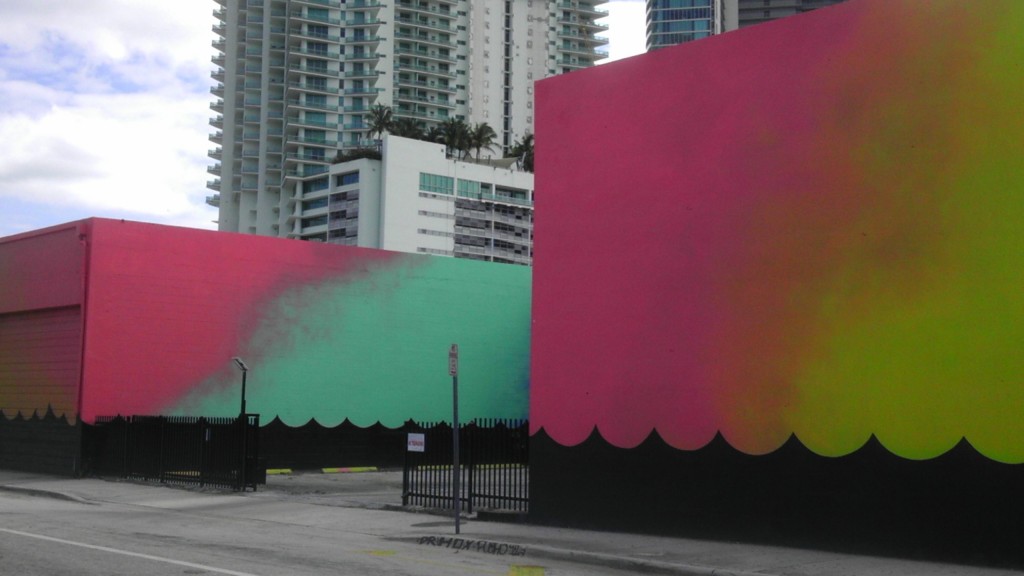Turn-Based Press and Turn-Base Mark
Back in 2008, Adler and I worked on a collaboration for a show called Coupling (organized by Kristen Thiele), the theme of which was collaborations between artist-couples. Because our kid was six years-old at the time, creating the work was challenging for us, and we primarily made the work by taking turns going to the printshop to work on it; one would be home with our child, and the other would be working on the piece.
During this process, I began to joke that we were doing turn-based printmaking. We both enjoy playing turn-based strategy games, and in the past used to play games together using the hotseat method: we’d each take our turn, then cede the chair in front of the computer to the other, to wait patiently again until our next turn. It seemed to me at the time that our collaborative art-making strategy was much like the playing of turn-based strategy games. It occurred to me that that would be a brilliant name for a press.
There’s a sense of collaboration, patience and turn-taking involved in working in a communal printshop, and there’s also the act of turning: turning cranks, turning pages, turning paper and images recto to verso, and so on. It was during the making of this collaborative work for the Coupling exhibition that I decided that if I ever started a press, that I would call it Turn-Based Press.
When the 2009 Knight Arts Challenge applications rolled around, I applied to start Turn-Based Press, not really expecting that I would get it. When I was awarded the grant, it was wonderful, and all the hard work that lead to today began.
In the Press now, adjacent to the Turn-Based Press Functional Print Series (One), Adler and I have installed Turn-Base Mark, the work which was the beginning of everything. Curiously, black waves feature prominently in the work, and also ended up being a prominent feature of the building mural–a decision that was made by people other than me and Adler (all of the building occupants split tasks well, and the folks who proposed the mural that we ended up going with were actually the TM Sisters and Thom Wheeler Castillo, I believe).
The black waves in the mural now are there as a nod to the original mural on the building which was the former home of Captain Harry’s.
It’s as if the work Adler and I did together had some level of prescience! We wanted to share it with everyone now that the Press is open to the public and in the first stages of setting up (it’s been a long, complicated road!).



For a little while, at least until Google updates their street view of the area, you can see an image of what the old mural used to look like. It was commissioned from Cary Chen by Captain Harry’s, and was an iconic landmark in the area–it was especially beloved by fisherfolk, in fact. We weren’t able to incorporate the fish into the mural, but we did want to keep some reference to it out of respect.